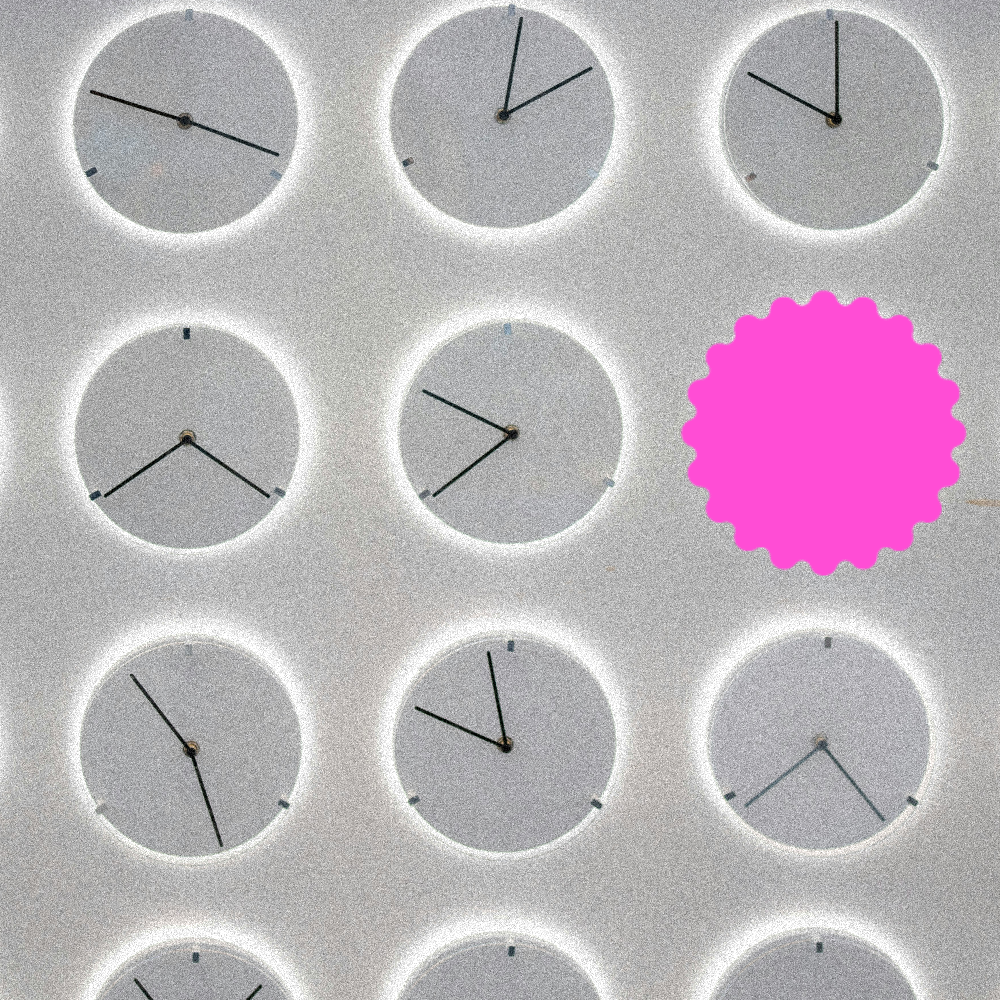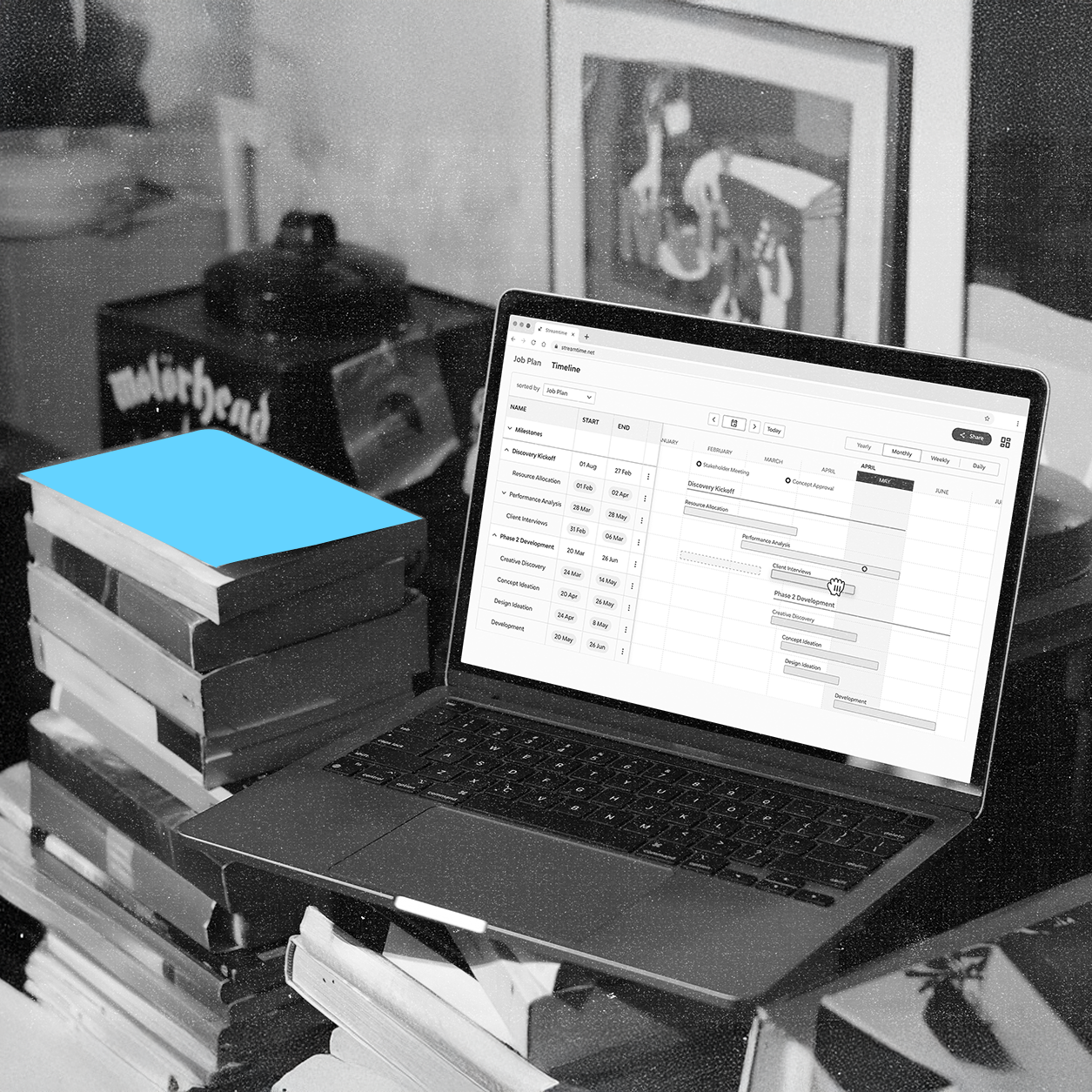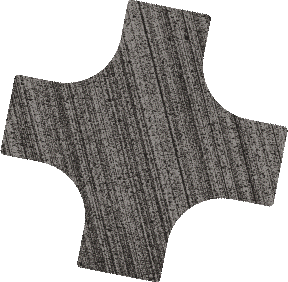This is Part 5 of our series on "The creative industry's relationship with time". If you missed it, read part 4 here.
“I love deadlines. I like the whooshing sound they make as they fly by.”
— Douglas Adams
Time, as a concept, can both be liberating and suffocating. One moment, it feels like we have all the time in the world; the next, it feels like there’s nowhere near enough.. Ever been on a 2 week holiday, arrived for that first day on the beach and then not stopped thinking about how the time is so short and it’s nearly over? Oh, just me then.
Time as the hero or the villain?
In the work environment, teams get briefed on a 6 month project and somehow still end up working weekends for (at least) the last month because they didn’t have enough time to get it done!
If we’re in control of our time, we can be in control of ourselves. The concept of encouraging and practising agency and autonomy in relation to our mental well-being at work is well-documented. Creatives love and need control (and time) but don’t always make the most of it when they have it. Wasted time for one-person, is rest and recovery for another.
Creative teams HATE having to track their time. Is hate a strong word? Not in my experience. I’ve seen creatives take jobs with a company almost purely because they don't track time.
The resistance to the concept of tracking or being accountable for time is partly intellectual (tight management will kill our creative culture) and mostly self-serving, since many don’t like the prospect of being managed, or worse, micro-managed.
Strangely, we’re quite prepared to be managed by our clients, and to salute when a client needs something, but they can be expected to resist when their own executives try to tighten things up.
- Michael Farmer. Madison Avenue Manslaughter.
A state of mind.
Time constraints in creative work present a fascinating paradox. On one hand, they can be profoundly liberating—focusing the mind, sparking innovation, and creating the productive pressure that leads to breakthrough ideas. On the other, they can become suffocating—crushing creative thinking, forcing shortcuts, creating stress and reducing quality in service of arbitrary deadlines. You know, when you bust a gut over a weekend to deliver for Monday morning, only for the client to finally give feedback the following Friday 😬.
This duality creates one of the most challenging balancing acts for creative agencies: how to harness time's liberating potential while preventing it from becoming a suffocating force.
The liberating effect of a deadline
Now, bear with me… counterintuitively, limitations often unleash creativity rather than restricting it. When time is bounded, it creates a productive tension that can sharpen focus and stimulate innovative thinking.
It’s like Parkinson's Law (“Work expands to fill the time available for its completion”) but in reverse: creativity can intensify when time contracts. A tight deadline can eliminate overthinking and perfectionism, forcing decisions that might otherwise be endlessly debated – if we choose to let it.
When we have limited time and have to focus our attention, we naturally prioritise what matters most. As Cal Newport observes in his book "Slow Productivity," doing fewer things with greater care often produces better results than attempting to maximise output.
You may have experienced that the right amount of time pressure creates a productive state of flow. The constraint becomes a creative partner rather than an adversary. But, it’s a precarious balancing act, that often can lean on the over-working, never-stopping side of the see-saw.
It can be that time limitations help avoid decision paralysis. When you have three weeks to develop concepts, you might generate dozens of options. When you have three days, you focus on developing the strongest ideas.
The filmmaker Robert Rodriguez captured this liberating aspect perfectly: "Not having the time and money to do things the 'right' way forced me to be more creative. I was forced to rely on creativity."
Living on the edge
I remember listening to a talk by Peter Williams from Deloitte, where he shared a concept that I’ll never forget. Starve a team of resource, money and time and give them a problem to solve and you’ll get the most, innovative, real and no BS solution to that problem. He turned it into a business at Deloitte, the Centre for the Edge.
Pete backed it up with a story where he was asked by a board why their millions of dollars investment in a project and firm was not producing results. Rather than tell them, he offered to show them. He asked for the same brief, a fraction of the resources and time, and set his team to tackle the problem at hand. The comparatively lack of resources led to a more efficient, innovative solution that made the previous firm and project look bloated, inefficient and a significant waste of money.
The right constraints don't have to limit possibilities—they can create the conditions for possibilities to emerge.
The Suffocation of Pressure
Despite these potential benefits, time constraints too often become a suffocating force in creative agencies. When deadlines are arbitrary, unrealistic, or disconnected from the actual needs of the work, they crush creativity rather than catalysing it (often accompanied by 3 or 4 deadlines at the same time).
Unreasonable time pressure forces shortcuts that compromise the very quality clients are paying for. As one creative ranting on Reddit noted:
"If I was given one hour to write a brochure and actually turned it around in that time, it would be poor-quality work and I'd probably catch flak for it."
Then of course, there’s the elephant in the room that we’ve collectively learned to ignore. Constant time pressure without adequate recovery periods leads to exhaustion and diminished creative capacity. The brain needs space to make connections and generate insights. When every minute must be accounted for, there's no room for exploration, experimentation, or the "productive wandering" that often leads to breakthrough ideas.
And what about the relationship? Clients, co-workers, managers… The pressure to meet unrealistic deadlines strains client relationships, team dynamics, and work-life balance. The human cost becomes unsustainable. I’ll never forget a client that sent an email just before midnight and chased up with a text at 5am wondering why she didn’t have an answer – the answer was no more projects with them!
This suffocating aspect of time tracking was captured by an anonymous creative in a feature on It's Nice That:
”The idea of tracking a creative project via timesheet is like trying to weigh flour with a tape measure. The tool simply doesn't match the nature of the work.”
Hunting for an imperfect balance: structure without strangulation
The key to navigating this paradox lies in creating structures that provide helpful boundaries without strangling creative potential. It requires a nuanced understanding of how different types of time constraints affect different phases of creative work.
For example, ideation and conceptual thinking may benefit from different time structures than execution and production. The former needs space for exploration; the latter often benefits from tighter constraints.
We can also plan better for what we know is likely to happen, but are often avoidant of when planning a project (usually to meet budget, or not put unnecessary pressure on a new client relationship). Build in time for the inevitable iterations, client feedback, and unexpected challenges. Like, every time I arrange to meet my in-laws at a certain time, or aim to leave the house with my entire family in tow.
And when it comes to small increments… unless you’re a law firm charging every 6 minutes (let’s face it you’re not) then why are you forcing that level of detail?
A novel approach could be to frame time discussions around the value being created rather than hours spent. This shifts the conversation from "How long will this take?" to "What will make this most effective or most valuable to the client?"
In this Medium article, MediaMonks, Wesley Ter Haar provides an instructive example of this balanced approach.
"We're less focused on telling people how much time they have... We're much more focused on delivering the best possible quality within the deadline that's available."
- Read more on Medium
Getting started
In a previous agency, we set up the concept of ‘sprints’ with clients. 2 week long phases of work with a fixed price, where we could control where the time was spent vs every hour accounted for based on a plan with 12hrs for one team member, 36 hours for another and so on. It wasn’t perfect, but for the most part it worked, and allowed us to choose when and where to spend time and create value.
We put individuals in control of planning their time, instead of having centralised planning that let people get lazy in just finding out what they’re doing today once they stepped into work, grabbed a coffee, sat down and logged on. Unlikely to be effective, especially when we all know some of the best ideas come when we’re outside of work… shower, 2am wake up?
Practically, there are ways to make this work:
- Seasonal planning: Organising work into distinct seasons with different rhythms and focuses, as Cal Newport suggests in his book "Slow Productivity."
- Time blocking: Designating specific periods for different types of work—creative thinking, client meetings, administrative tasks—rather than attempting to multitask.
- Incubation periods: Building in time for ideas to develop subconsciously between active work sessions.
- Reflection rituals: Creating regular opportunities to step back and evaluate what's working and what isn't from both personal and team / business perspectives.
Oliver Burkeman offers a perspective in "Four Thousand Weeks" that resonates deeply for creative work:
”The real problem isn't our limited time. The real problem—or so I hope to convince you—is that we've unwittingly inherited, and feel pressured to live by, a troublesome set of ideas about how to use our limited time, all of which are pretty much guaranteed to make things worse."
The challenge for creative agencies isn't to eliminate the concept or even pure mention of time, but to transform it from a suffocating force into a liberating one. This requires a fundamental shift in how we think about, talk about, and structure time.
It’s why I think time isn’t actually the issue at all. It’s our mindset, the frameworks we adopt, and the relationship we choose to have with it. Hold on. Do we need a time therapist?!
.png)















